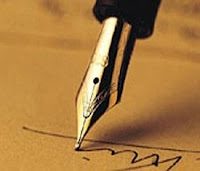Earlier this week, Elana Johnson wrote a post asking for input on outlining and in response to it, I thought I would share with you all my own outlining style.
Warning: the following post gives a detailed look at the workings of the gabi brain and these methods may not be suitable for all writers.
The truth is, I’m a visual thinker not a verbal one, which is probably a bit strange for a writer. In a former life, I was a product designer and a lot of my design training tends to inform my approach to writing.
I’m also a native New Yorker, born and raised and still living in the city. My love for this city also informs my writing, despite the fact that I have yet to write anything that’s actually set in NYC.
My visual approach to writing has merged with my New York mindset and lately, I have found myself outlining in the form of subway maps. The basic idea is that subway lines represent story threads and the “stops” on the subway line represent individual scenes. In some outlines, I have several threads that intersect and come full circle (like the BAX outline above). In other situations, I might have two separate lines that run parallel but come together in some key points (like my very early outline of my WIP).
In addition, I also make charts to go with my subway outlines, in which I detail what happens at each of the “stops.” In particular, these charts include the following information about each scene:
- Characters
- Important Events
- Setting
- Purpose (or “Why am I writing this scene anyway?”)
I realize that the subway lines might make sense to me, but to other readers (like my critique group or a workshop) they just look like lines and dots. This is why I make the charts, to help translate the insanity that is my outline method. This method might not work for all people, but for me, it helps to think of writing a piece as being sort of like a journey. It also helps me to think of each scene as one dot in a long list of dots, because writing a dot is easy. Whenever I start to feel doubts, I try to remind myself that it’s just a stupid dot and I can write one dot. That way, dot by dot and scene by scene, I get myself to write the book.












 Call me Gabi (pronounced gah-BEE). I'm a writer, freelance teacher, and a lover of books and words. I'm also the instigator of DIY MFA. iggi's my sidekick, but he thinks he's the brains behind this operation.
Call me Gabi (pronounced gah-BEE). I'm a writer, freelance teacher, and a lover of books and words. I'm also the instigator of DIY MFA. iggi's my sidekick, but he thinks he's the brains behind this operation.
 Fitness for Writers Blog Series: Feel Better Write Better
Fitness for Writers Blog Series: Feel Better Write Better Writing Challenges as Mindful Writing
Writing Challenges as Mindful Writing Story A Day
Story A Day All-Day Writing Marathon, May 1
All-Day Writing Marathon, May 1